How IoT is Revolutionizing Indoor Agriculture

The adoption of IoT in indoor agriculture is rapidly increasing. The global IoT in agriculture market is expected to reach $20.9 billion by 2026 with a compound annual growth rate (CAGR) of 12.2% from 2021 to 2026. Studies show that IoT-enabled solutions can increase crop yield by up to 50% while reducing water usage by 70%.
IoT technologies provide real- time monitoring and automation solutions which helps with data-driven decision-making and resource management. Real time monitoring and automation solution helps us to create optimal growing conditions for crops. Data analytics help in making informed decisions to maximize yield and quality, while predictive analytics forecast crop yields and disease outbreaks.
Overview of IoT in Indoor Agriculture
Indoor agriculture includes various verticals such as hydroponics, greenhouse farming, aeroponics, plant tissue culture, and vertical farming. Unlike traditional outdoor agriculture, indoor agriculture offers precise environmental control, allowing for optimized plant growth and higher yields. It enables year-round production, conserves water, utilizes space efficiently, and reduces the environmental impact by minimizing the need for pesticides and herbicides. Indoor agriculture is revolutionizing the farming industry, providing a sustainable and efficient alternative to traditional outdoor farming practices. With the advancement of technology, indoor agriculture continues to evolve, leading to innovative solutions that address global food security challenges while ensuring the production of high-quality, nutritious crops in a controlled environment.
What is Indoor Agriculture
Indoor agriculture refers to the practice of growing crops, plants, or produce within an enclosed structure, utilizing controlled environments and technology to optimize growth conditions. It encompasses various methods, including hydroponics, greenhouse farming, aeroponics, plant tissue culture, and vertical farming. These methods differ from traditional outdoor agriculture by offering precise control over environmental factors such as temperature, humidity, and light, resulting in higher yields and a more sustainable approach to farming. Indoor agriculture plays a crucial role in addressing global food security challenges by providing a year-round, efficient, and space-saving alternative to traditional farming practices.
Types of Indoor Agriculture
Indoor agriculture encompasses various methods and techniques tailored to specific needs and resources. The main types include:
Hydroponics
Growing plants without soil, utilizing nutrient-rich water solutions. Hydroponic systems provide plants with the necessary nutrients dissolved in water, allowing for precise control over nutrient levels. This method conserves water, reduces the risk of pests and diseases, and maximizes space utilization.
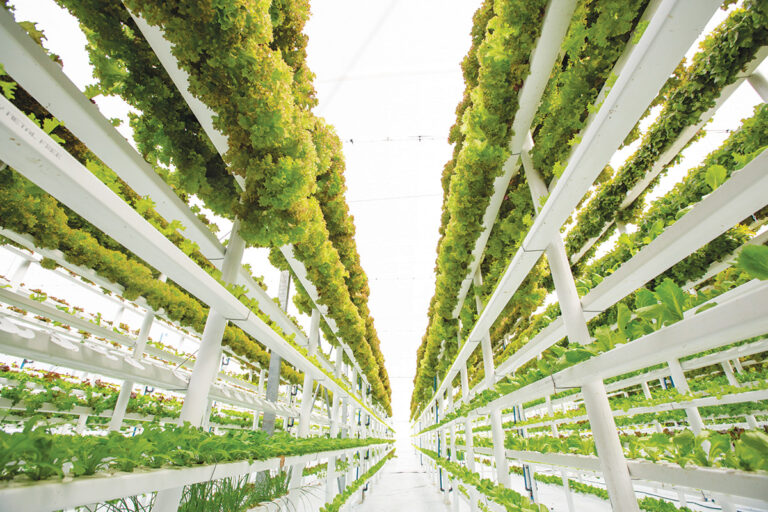
Green House
Cultivating crops within a controlled environment, often using glass or plastic structures to extend the growing season and protect plants from adverse weather conditions. Greenhouse farming allows for year-round production by regulating temperature, humidity, and light, leading to higher yields and better crop quality compared to traditional outdoor farming.
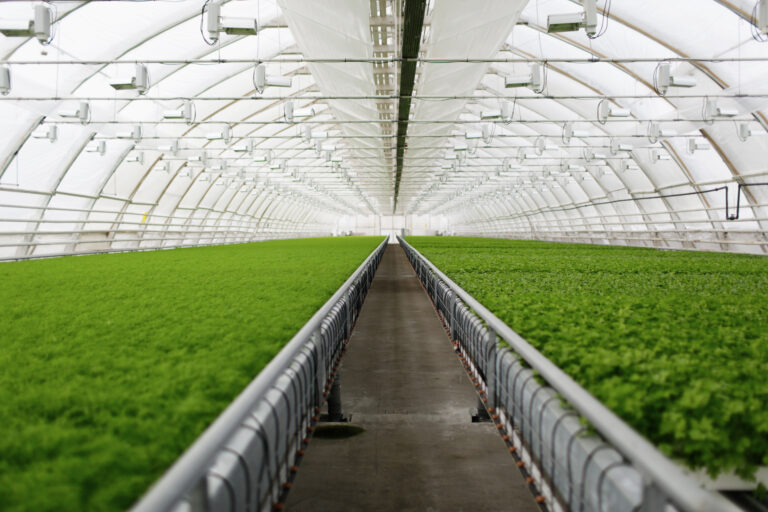
Aeroponics
Growing plants in an air or mist environment without the use of soil or an aggregate medium. Aeroponic systems provide a highly oxygenated and nutrient-rich environment, promoting rapid and efficient plant growth. This method conserves water, reduces the risk of soil-borne diseases, and allows for the cultivation of crops in a space-efficient manner.
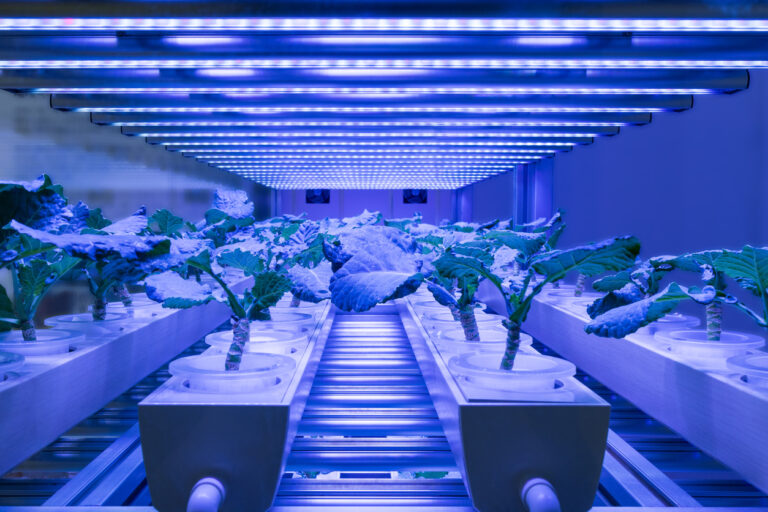
Plant Tissue Culture
Propagating plants under sterile conditions to produce clones or maintain specific plant traits. Plant tissue culture enables the mass production of genetically identical plants, free from pathogens, and in a controlled environment. This method is commonly used for the propagation of rare or endangered plant species and the production of disease-free plants.
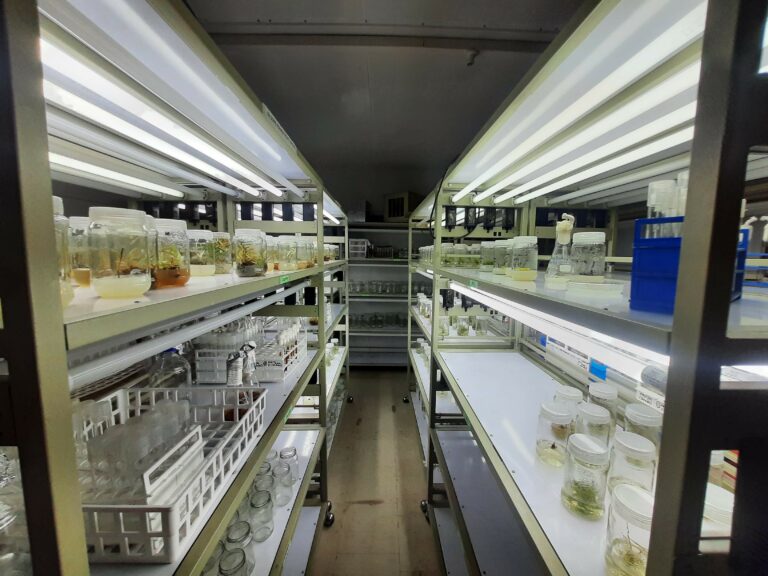
Why Indoor Agriculture ?
Traditional outdoor agriculture faces numerous challenges, including unpredictable weather patterns, limited arable land, and the depletion of natural resources. In contrast, indoor agriculture provides a sustainable and efficient solution to address these challenges. Here’s why indoor agriculture is gaining momentum:
- Climate Control:
Traditional agriculture is heavily reliant on favourable weather conditions, making crops vulnerable to extreme temperatures, droughts, and storms. Indoor agriculture allows for precise control over environmental factors such as temperature, humidity, and light, ensuring optimal growing conditions regardless of external weather patterns. - Year-Round Production:
Unlike traditional outdoor agriculture, indoor agriculture enables year-round production, leading to higher and more consistent yields. By providing a controlled environment, indoor farming eliminates the dependence on seasonal changes, extending the growing season and ensuring a constant supply of fresh produce. - Water Efficiency:
Indoor agriculture systems are more water-efficient compared to traditional farming methods. Hydroponic and aeroponic systems recycle and reuse water, reducing overall water consumption significantly. This efficient use of water resources is crucial, particularly in regions facing water scarcity and drought conditions. - Space Utilization:
Indoor agriculture, especially vertical farming, makes more efficient use of space, allowing for higher crop yields in smaller areas. With the world’s population continuing to grow, utilizing space effectively is essential to meet the increasing demand for food without further encroaching on natural habitats. - Reduced Environmental Impact:
Indoor agriculture minimizes the environmental impact by reducing the need for pesticides and herbicides, conserving water, and limiting transportation requirements. By cultivating crops in a controlled environment, indoor agriculture promotes sustainable farming practices and mitigates the negative effects of traditional agriculture on the environment. - Technological Integration:
Indoor agriculture integrates advanced technologies such as IoT (Internet of Things), automation, and data analytics to optimize plant growth and resource management. These technological advancements enable farmers to make data-driven decisions, leading to increased efficiency, productivity, and profitability. - Food Security:
Indoor agriculture plays a crucial role in addressing global food security challenges by providing a reliable and efficient food production system. By producing food closer to urban centers, indoor farming reduces the distance food needs to travel, ensuring fresher and more nutritious produce reaches consumers.
Applications of IoT in Indoor Agriculture
In indoor agriculture, IoT plays a crucial role by integrating advanced technology to optimize plant growth and resource management. Through real-time monitoring, automation, and data-driven decision-making, IoT enhances efficiency, maximizes yields, and ensures sustainable farming practices. Following are some of the applications of IoT in indoor agriculture:
Monitoring of Critical Environmental Parameters
Use of IoT in indoor agriculture like use of IoT sensors enable the real-time monitoring of critical environmental parameters, ensuring optimal conditions for plant growth. Sensors measure light conditions, soil moisture, temperature, and humidity, providing farmers with valuable insights into the health and status of their crops. By collecting and analyzing data, farmers can make informed decisions to optimize growing conditions and maximize yield.
Automation and Control
IoT-based automation systems control various aspects of indoor agriculture, enhancing efficiency and reducing labor requirements. Irrigation automation ensures that plants receive the right amount of water at the right time, minimizing water waste and ensuring optimal soil moisture levels. Airflow automation regulates air circulation within the indoor farming environment, preventing the buildup of harmful gases and maintaining optimal conditions for plant growth. Lighting conditions are automated to provide the ideal spectrum and intensity of light, promoting photosynthesis and maximizing crop yield.
Crop Management
IoT facilitates precise crop management through real-time monitoring and data-driven decision-making. Farmers can remotely monitor plant health, growth patterns, and nutrient levels, allowing for timely intervention and optimization of crop production. Crop management systems ensure that plants receive the necessary nutrients and care, resulting in healthier, more robust crops.
Precision Farming
IoT enables precision farming practices by providing accurate and detailed information about crop and soil conditions. Farmers can adjust environmental parameters precisely, such as water, light, and nutrients, to meet the specific needs of each crop. Precision farming optimizes resource utilization, minimizes waste, and increases overall efficiency, leading to higher yields and improved crop quality.
Predictive Analytics
Predictive analytics in indoor agriculture use historical data to forecast future trends and outcomes. By analyzing data collected from sensors and other IoT devices, predictive analytics can anticipate crop yields, disease outbreaks, and environmental changes. Farmers can make proactive decisions based on these predictions, mitigating risks and optimizing crop production.
Benefits of IoT in Indoor Agriculture
Use of IoT in agriculture has been a gamechanger in agricultural sectors. It has not only helped the farmers with increasing yield and quality but has also helped plant biotechnologist and agricultural researchers to broaden their research aspects by providing them data driven insights. Following are some of the benefits of use of IoT in indoor agriculture.
- Increased Yield and Quality
IoT facilitates precise monitoring and control of environmental factors, resulting in optimized growing conditions that lead to increased crop yields. By providing real-time data on light, moisture, temperature, and nutrient levels, IoT ensures that crops receive the ideal conditions for growth, resulting in higher-quality produce. Enhanced crop production means a greater yield per harvest, meeting the demands of a growing population and improving food security. - Sustainability and Environmental Impact
IoT-based systems in indoor agriculture minimize water usage through efficient irrigation systems, reducing consumption by up to 70% compared to traditional methods. By precisely managing resources such as water, energy, and nutrients, IoT reduces waste and minimizes the environmental footprint of indoor agriculture. Reduced need for pesticides and herbicides further enhances sustainability, ensuring safer and healthier produce for consumers. - Cost Efficiency
Increased Yield and Quality: Enhanced Crop Production
IoT facilitates precise monitoring and control of environmental factors, resulting in optimized growing conditions that lead to increased crop yields. By providing real-time data on light, moisture, temperature, and nutrient levels, IoT ensures that crops receive the ideal conditions for growth, resulting in higher-quality produce. Enhanced crop production means a greater yield per harvest, meeting the demands of a growing population and improving food security.
Case Study: ThingHz Smart Tissue Culture Rack
ThingHz introduces a groundbreaking solution for the plant biotech industry with its Smart Tissue Culture Rack. This case study examines how our innovative technology addresses the pain points faced by plant biotechnologists and researchers.
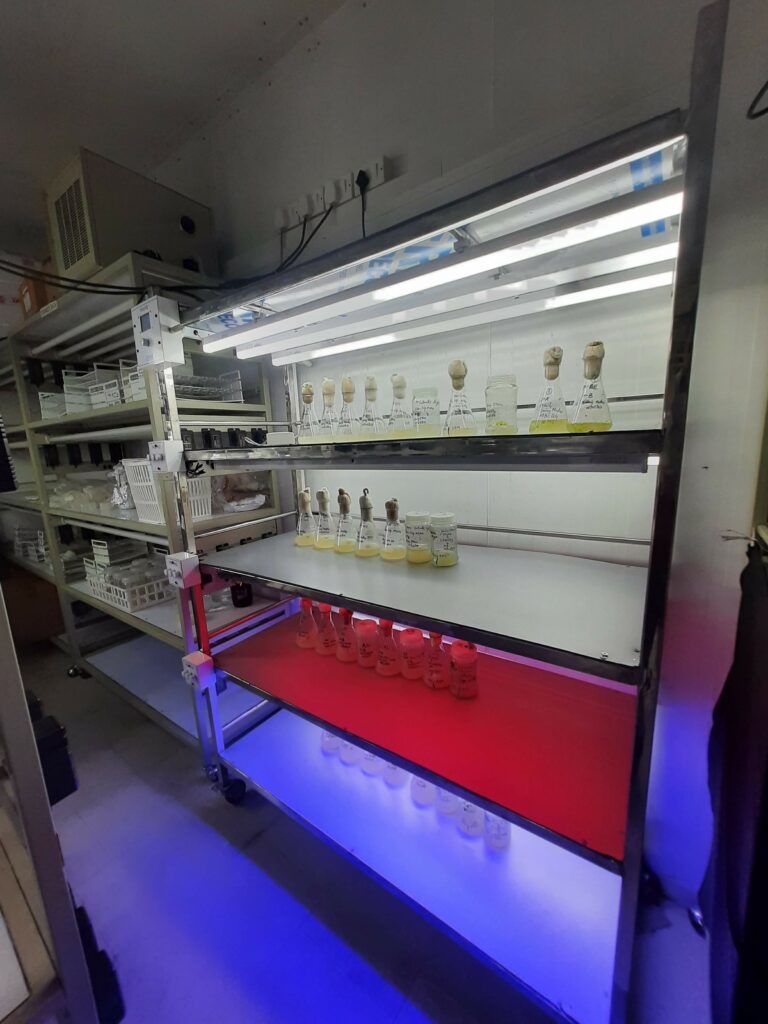
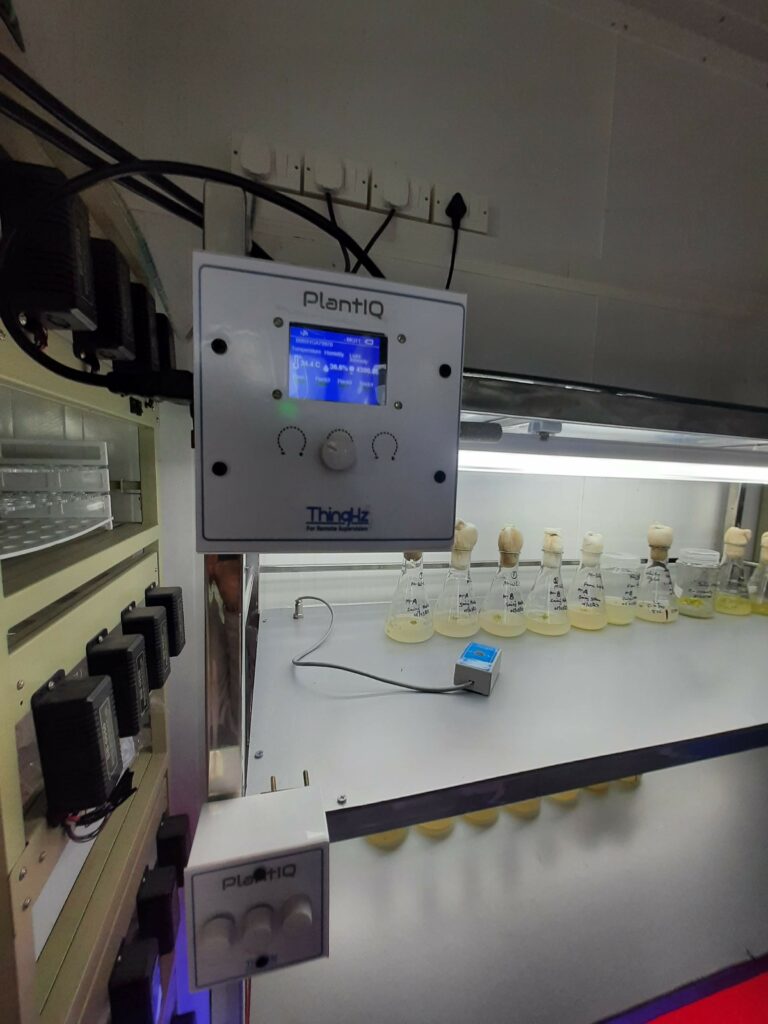
Problem ThingHz is solving
- Multiple Iterations: Plant biotechnologists and researchers often face the challenge of multiple iterations to find suitable tissue culture protocols. Manual monitoring of critical environmental parameters results in inconsistent data, leading to contamination and labor-intensive processes. The lack of real-time insights further hinders informed decision-making, resulting in delays in research progress.
- Contamination: Manual monitoring of critical environmental parameters, such as light intensity, temperature, and humidity, often leads to contamination inside the culture room, which affects research outcomes.
- Lack of Data-Driven Insights: Insufficient data availability prevents informed decision-making, necessitating multiple protocol iterations and delays.
Solution
- Real-time Monitoring: ThingHz Smart Tissue Culture Rack leverages cutting-edge technologies like IoT to provide real-time monitoring of critical environmental parameters like temperature, humidity, CO2 and light intensity. This allows researchers to minimize contamination and optimize protocols effectively.
- Automation: Thinghz solution also offers remote monitoring and automation, allowing users to automate and schedule the photoperiod using a mobile application and web dashboard. This eliminates the need for manual intervention, ensuring consistent lighting conditions throughout the cultivation process.
- Data-Driven Insights: ThingHz Smart Tissue Culture Rack provides real-time data on light intensity, temperature, and humidity of each shelf of the rack. The user can set light intensity from 300lx to 5000 lx using our dimmable LEDs, reducing the need for multiple protocol iterations. Additionally, users can set escalation alerts from the mobile application, ensuring proactive measures can be taken to maintain optimal growth conditions for plant cultures.
Benefits
- Increased Efficiency: Using ThingHz Smart Tissue Culture Rack, plant biotechnologists can limit their iterations by up to 50% and increase their efficiency by up to 70% in plant tissue culture.
- Minimized Contamination: The real-time monitoring and automation capabilities of the Smart Tissue Culture Rack significantly reduce the risk of contamination, ensuring the integrity of research outcomes.
- Informed Decision-making: With access to real-time data and insights, researchers can make informed decisions, reducing the need for multiple protocol iterations and accelerating research progress.
Conclusion
In conclusion, it’s evident that IoT is revolutionizing indoor agriculture, offering a multitude of benefits that enhance productivity, sustainability, and cost-efficiency. Through precise monitoring and control of environmental factors, IoT ensures optimized growing conditions, resulting in increased crop yields and higher-quality produce. By minimizing resource consumption and reducing environmental footprint, IoT-based systems promote sustainability and healthier farming practices. Moreover, the cost-efficiency of IoT technology in indoor agriculture is undeniable, with lower operational costs and a higher return on investment in the long run. As indoor agriculture continues to evolve, the integration of IoT will play an increasingly vital role in meeting the demands of a growing population, improving food security, and shaping the future of farming.
I hope you liked this blog. Visit ThingHz website to know more